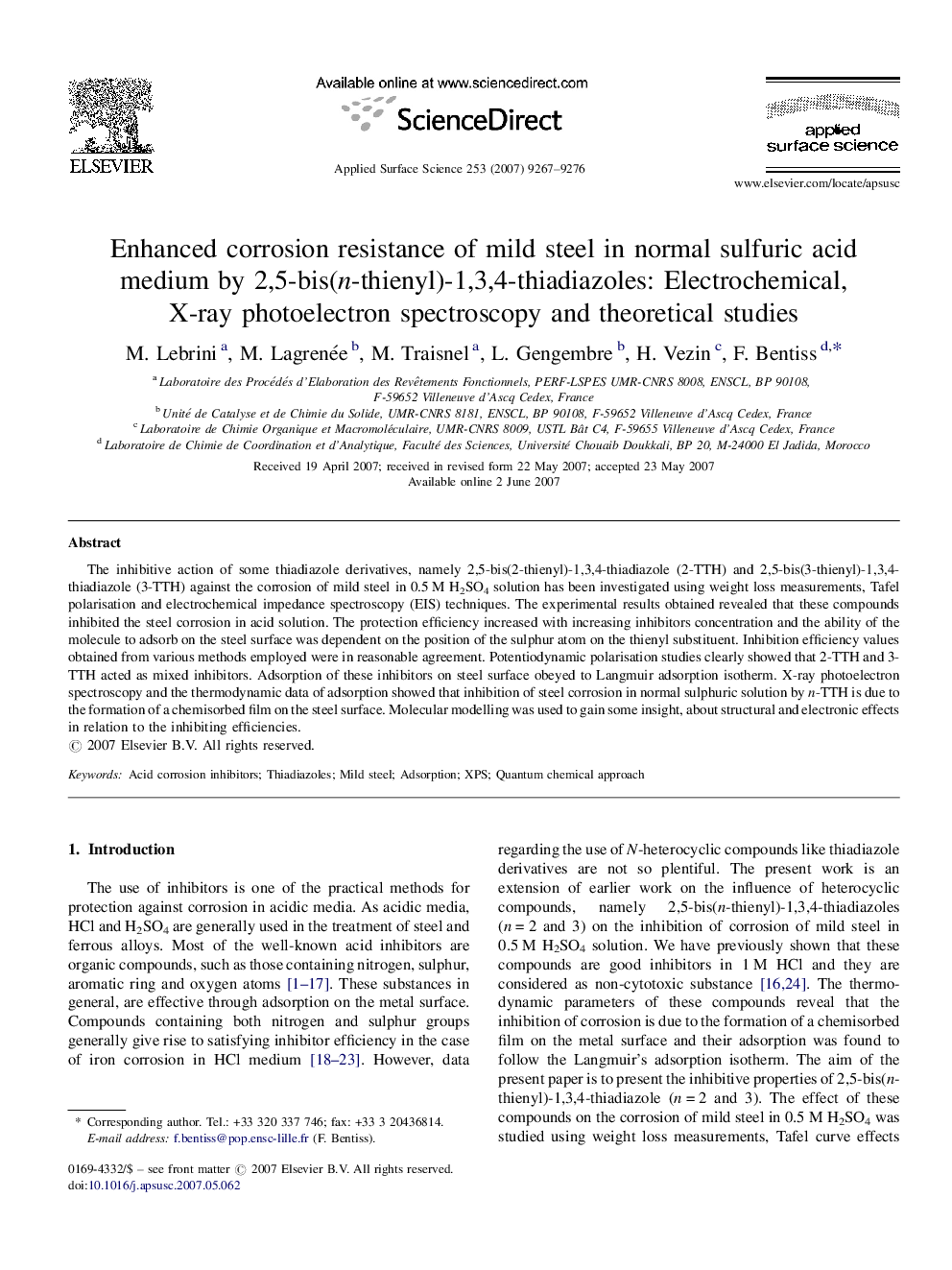| Article ID | Journal | Published Year | Pages | File Type |
|---|---|---|---|---|
| 5363440 | Applied Surface Science | 2007 | 10 Pages |
The inhibitive action of some thiadiazole derivatives, namely 2,5-bis(2-thienyl)-1,3,4-thiadiazole (2-TTH) and 2,5-bis(3-thienyl)-1,3,4-thiadiazole (3-TTH) against the corrosion of mild steel in 0.5Â M H2SO4 solution has been investigated using weight loss measurements, Tafel polarisation and electrochemical impedance spectroscopy (EIS) techniques. The experimental results obtained revealed that these compounds inhibited the steel corrosion in acid solution. The protection efficiency increased with increasing inhibitors concentration and the ability of the molecule to adsorb on the steel surface was dependent on the position of the sulphur atom on the thienyl substituent. Inhibition efficiency values obtained from various methods employed were in reasonable agreement. Potentiodynamic polarisation studies clearly showed that 2-TTH and 3-TTH acted as mixed inhibitors. Adsorption of these inhibitors on steel surface obeyed to Langmuir adsorption isotherm. X-ray photoelectron spectroscopy and the thermodynamic data of adsorption showed that inhibition of steel corrosion in normal sulphuric solution by n-TTH is due to the formation of a chemisorbed film on the steel surface. Molecular modelling was used to gain some insight, about structural and electronic effects in relation to the inhibiting efficiencies.
